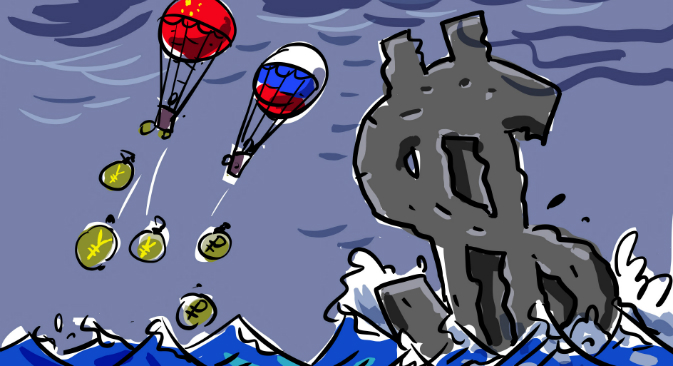
Click to enlarge. Drawing by Iorsh
The sharp devaluation of the ruble in late 2014 and early 2015 resulted in an obvious reduction in Russian imports. Total imports to Russia fell by 38.5 percent in the first half of this year. In the same period, China’s exports to Russia fell by 36 percent.
The $200 billion bilateral trade target that Russia and China set for 2020 is out of reach, on account of several economic factors, including low oil prices.
The rapid growth of bilateral trade from 2004 to 2015 was based on three factors: a significant improvement in Russia-China political relations, rising energy and commodity prices, as well as the signing of a number of oil and gas supply agreements.
As a result, China's share in Russia's imports tripled from 2003 to 2013 – from 5.8 to 16.9 percent. On the contrary, Russia's share in Chinese imports slightly decreased over these 10 years – from 2.3 to 2 percent, which was due to the fact that Russian exports comprised mainly of raw materials.
For Russia to achieve its export target of $100 billion to China by 2020, annual growth of 25 percent is needed. A similar growth rate of Russian exports to China was recorded in 2004-2005 and in 2010-2011, but in both cases, the rapid export growth was short-lived and was based on the growth of Russian oil exports to China and a rise in global oil prices.
Even with slower economic growth in China, there will be a demand for additional volumes of natural resources. However, Russia may not have adequate resources to cater to a growing Chinese demand.
The current rate of Chinese economic growth (7 percent per year) will inevitably increase China's share in global GDP, while the stagnation or very low growth rates of the Russian economy may lead to the reduction of Russia's share in the global economy.
The author is the Head of the Analytical Group Center for Development at the Higher School of Economics, and was the First Deputy Chairman of the Russian Central Bank in 1995-1998.
All rights reserved by Rossiyskaya Gazeta.
Subscribe
to our newsletter!
Get the week's best stories straight to your inbox